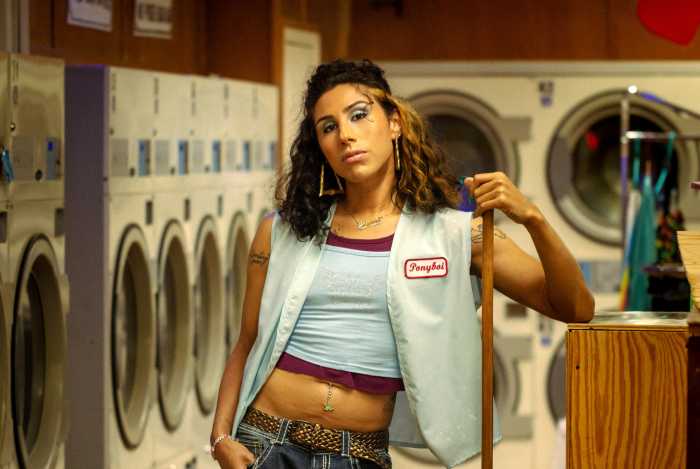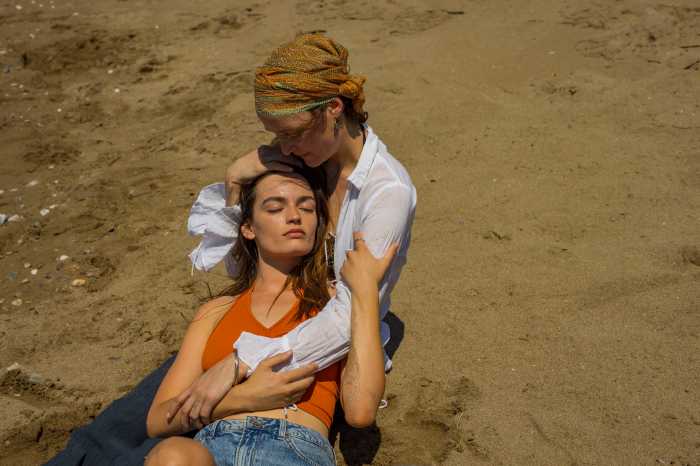The gangster film is based in a mythology that has proved remarkably malleable across history. If it started in the US, filmmakers in France, Italy, Japan, South Korea, and Hong Kong (just to begin with) have put their own stamp on it. An international conversation has always taken place through the genre, reflecting the history and values of each nation that has adopted it.
Colombian directors Cristina Gallego and Ciro Guerra’s “Birds of Passage,” set among their country’s indigenous Wayuu culture as the marijuana trade exploded from 1968 to 1980, complicates this because it will clearly mean something different to audiences at home versus those in North America.
Guerra’s last film, “Embrace of the Serpent,” was a surprise hit in the US. In retrospect, its story about shamans taking white men on a search for a very rare hallucinogenic plant tied into ayahuasca chic, but that was no doubt unintentional. Its anti-colonial politics were expressed in a way that appealed to North American progressives. Gallego (who produced but did not direct it) and Guerra are working with a bigger budget and, perhaps more importantly, much more self-consciousness about their audience this time around. They blame North America’s appetite for drugs for corrupting the Wayuu, but “Birds of Passage” makes the point and darts away from it. Ironically, this film was made with money from the American government (as well as production funds from Denmark, Mexico, Spain, France, and Colombia itself.)
Hippie Peace Corps volunteers in Colombia unintentionally open up Pandora’s box by asking Raphayet (José Acosta) if he can score marijuana for them. While this initially goes smoothly and peacefully, his friend Moises (Jhon Narvaez) later kills several foreigners mid-deal. After this, violence never leaves the illegal drug business. In a five-chapter structure, “Birds of Passage” follows a decade’s worth of murder and revenge, with older women like Ursula (Carmiña Martínez) calling the shots as young men pay the price for their new business ventures. The directors have acknowledged the influence of “The Godfather” but said they wanted to turn such stories of families of male criminals on their head by emphasizing matriarchal power.
“Birds of Passage” devotes a lot of time to celebrating Wayuu culture and pointing out its fragility, but it winds up exoticizing it in ways that are all too familiar. A narrator sings the film’s story periodically. There are many long shots set in the desert, half Alejandro Jodorowsky and half Sergio Leone. The more surreal the film gets and the more it celebrates Wayuu tradition and folklore, the less expressive it actually is. As well-intentioned as Gallego and Guerra are, the film really winds up communicating their distance from the world they’re depicting.
Fortunately, there are more valuable qualities to “Birds of Passage.” Going back to the 1930s, gangster films have frequently been blamed for glorifying the life of crime they portray while pretending to criticize it. But at best, they can convey its seduction while showing its considerable downside in a way that cuts deeper than moralistic scolding. “Birds of Passage” is genuinely disgusted by violence. Guns go off frequently, but we never see bullets hit their victims in the same shot. However, this isn’t the sanitized PG-13 depiction of violence all too familiar from Hollywood. It is jarring and startling. Characters die without the slightest warning. The film includes many gruesome images of bloody corpses.
“Birds of Passage” starts off looking pretty in a very conventional way, but it gets grimmer and more mournful in its final two chapters. The sound design also becomes more complex. It feels like it could’ve been made during the period in which it’s set. For one thing, that was the last time mainstream American cinema was this comfortable critiquing conventional ways of portraying violence or business; it comes off as a modern-day “revisionist Western.”
If Gallego and Guerra bring a tourist’s eye to Colombia’s indigenous culture, they also have a storytelling focus that implicitly questions North American individualism. There’s no real protagonist to “Birds of Passage.” Raphayet and Ursula never exactly take control over the story, even if the film settles on them for five-minute stretches. It reflects Wayuu culture in a more subtle way, by using the community rather than a person as its main character. The use of non-professional actors in many roles aids this; as critic Peter Debruge wrote, “The film is better cast than it is acted, pairing professionals in the lead roles with a memorable ensemble of toothless and sun-ravaged amateurs.” But that brings a sense of reality to a narrative that might otherwise seem familiar.
I’m not sure that ultimately there’s much to “Birds of Passage” other than being a well-made gangster film that attempts to approach its subject from an unusual perspective, but it sympathizes with Latin Americans who get involved in drug dealing without going to the opposite extreme of glamorizing them.
BIRDS OF PASSAGE | Directed by Cristina Gallego and Ciro Guerra | The Orchard | In Spanish with English subtitles | Opens Feb. 13 | Film Forum, 209 W. Houston St. | filmforum.org



































